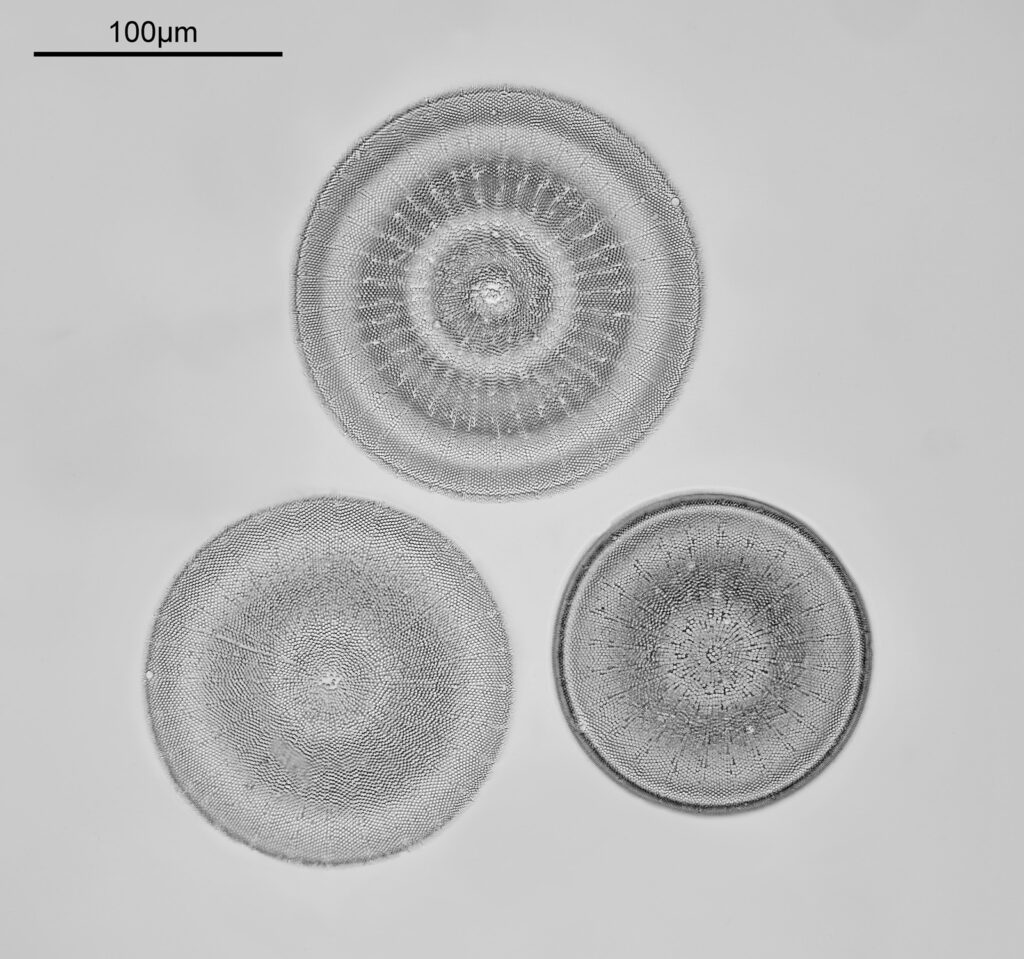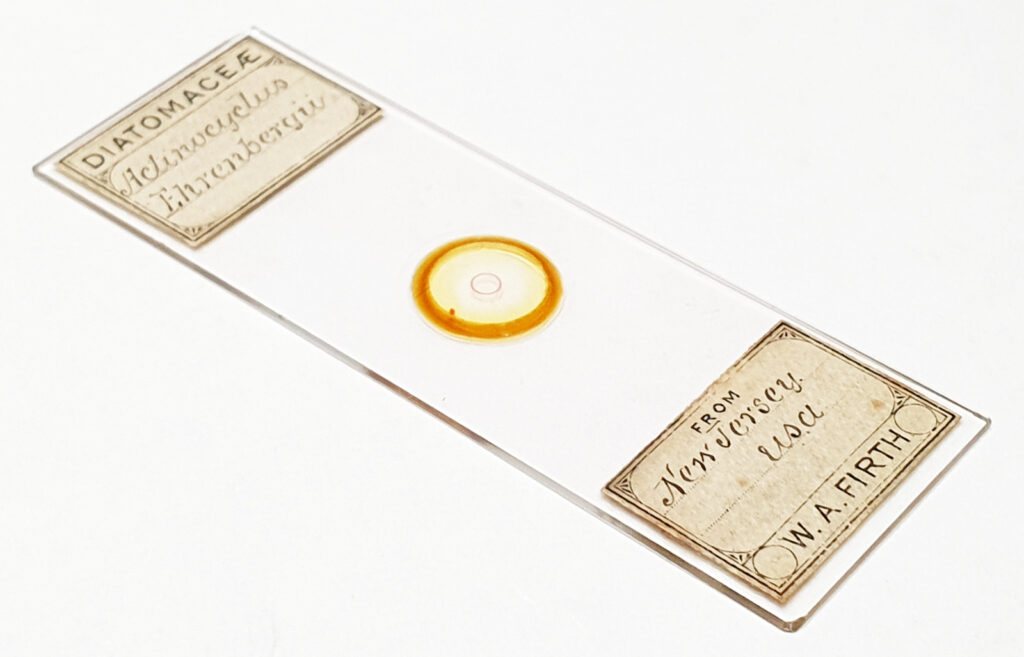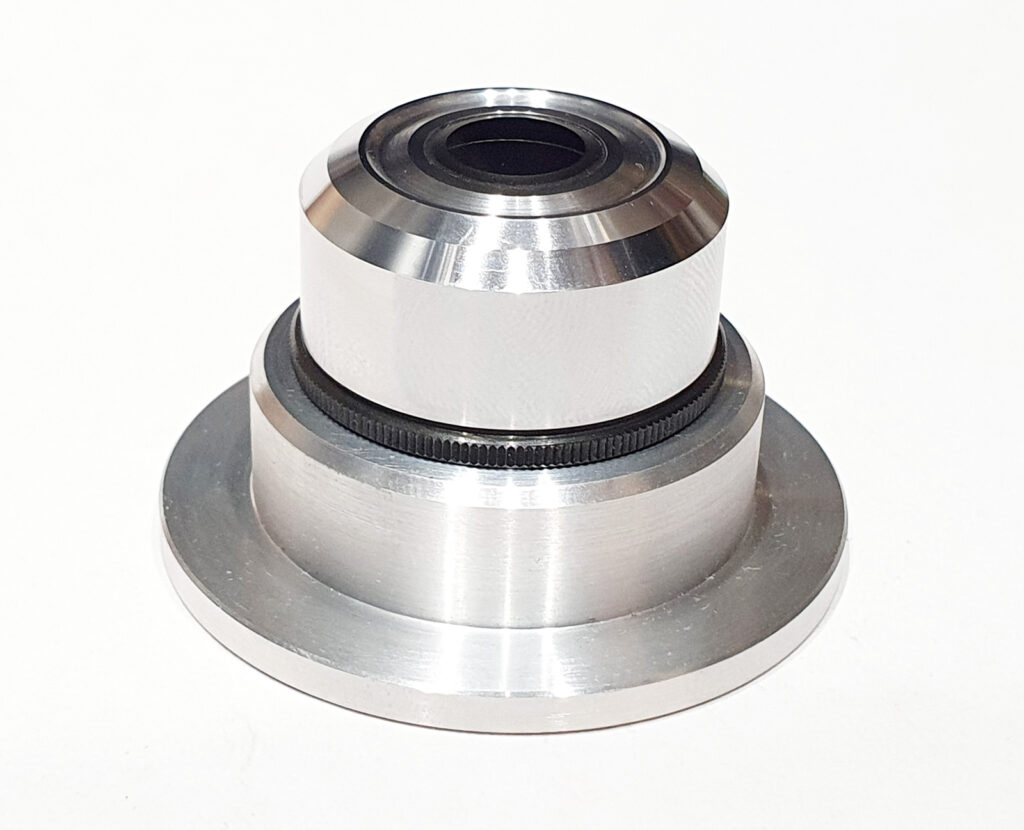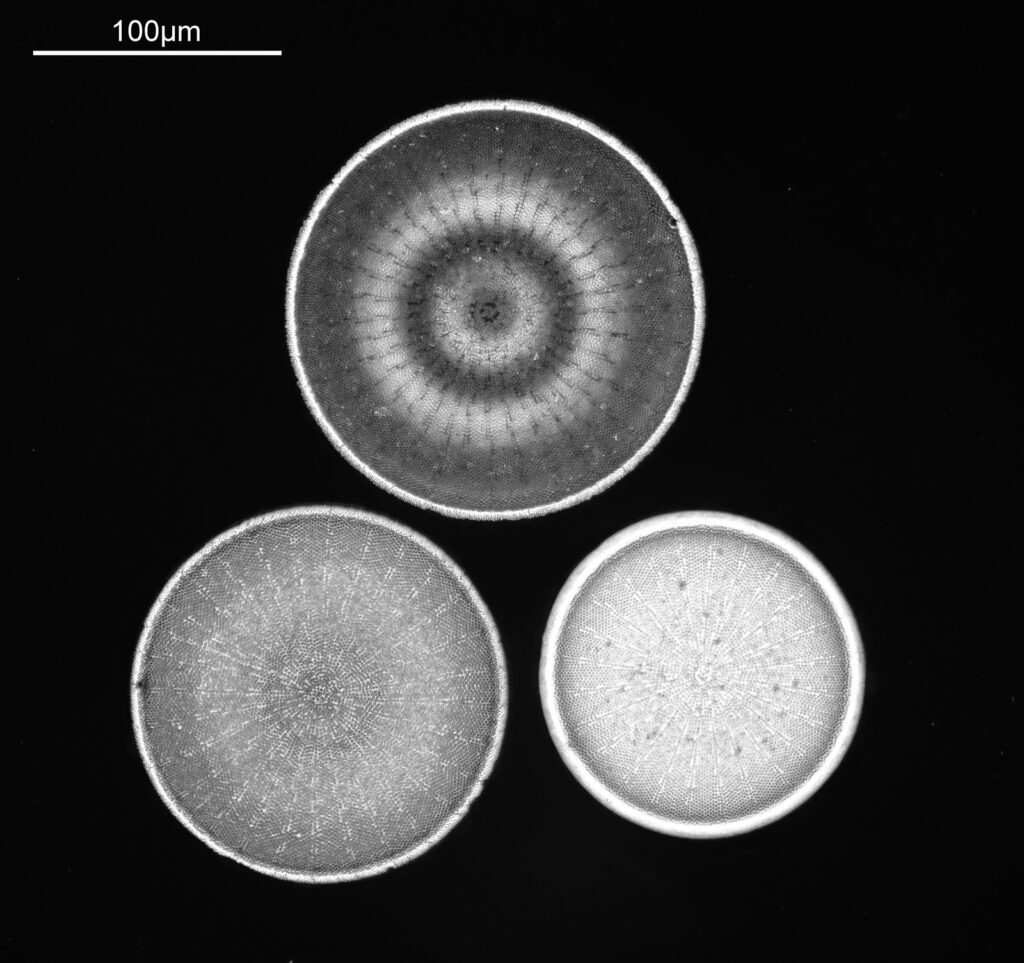A two part post today, first the imaging of a beautifully made slide by W.A. Firth containing 3 examples of the diatom Actinocyclus ehrenbergii, and then a piece on adapting microscope equipment from different manufacturers to be able to use them together.
First the slide. This was imaged on my Olympus BHB microscope, using 450nm LED light. A 20x Nikon Plan Apo NA 0.65 objective was used, in combination with an Olympus Aplanat Achromat condenser set to slightly oblique. A 2.5x Nikon CF PL photoeyepiece was used, and the camera was a monochrome converted Nikon d850 camera. This is a stack of 9 images (Zerene stacker), and has been reduced from the original resolution for sharing (this is 1600 pixels across vs. 4632 pixels for the original) which has obviously impacted viewing resolution. Here’s the image.

The slide is beautifully made (and W.A. Firth is well known for excellent slides – see here for more information), and oblique illumination has done a good job of showing the features. Here’s the slide.

Being a bit of an optics geek, I enjoy trying out equipment from different manufacturers, hence the use of a Nikon objective and photoeyepiece on my Olympus microscope. With regards to condensers, very often different manufacturers have different specifications in terms of how they are mounted to microscope, so unlike objectives which are often RMS threaded, trying different condensers can be more of a challenge.
A few weeks back I bit the bullet and contacted a machinist I have used before – Machined Precision Components Ltd, based in Norfolk, UK – to make me some adapters to allow different condensers to be mounted on my Olympus BHB. The first one I’ve got back is for a Reichert Neo 1.18/1.42 dark ground condenser. Here’s the condenser in its custom made mount (condenser at the top – black knurled section and above, mount at the bottom).

Here’s the information about the condenser, from the underside of its original Reichert mount.

What a wonderfully made piece of equipment this condenser is, but then Reichert are well know for high quality microscope components. The custom made mount fits the condenser really well, and is a nice snug fit in the Olympus microscope. The condenser was oiled to the underside of the W.A. Firth slide, and other than that the same setup was used as for the image above (7 images were used for the stack was used this time) to produce a dark ground image shown below.

The Reichert Neo dark ground condenser produced a really nice dark ground image, which did need a bit of tidying up – a few bright spots in the background, probably from dust on the slide, and a bit of haloing around the bright diatoms (not unexpected). While perhaps not obvious on the images here the dark ground image looks be slightly lower resolution than the oblique illumination image. It is commonly thought that dark ground imaging is a way of getting higher resolution, however as I understand it is more of an ‘apparent increase’ in resolution as a result of improved contrast making things more easy to see. In the oblique illuminated image contrast is already very good, hence the dark ground image actually looks a little softer in comparison.
As a practical man I like to make my own equipment whenever I can, but not having a lathe (or at the moment, the skill to use one) finding a good machinist is a key part of my research. I’d like to thank Machined Precision Components for putting up with my complex demands, and less than perfect sketches when I send through requests, and I look forward to reporting back on the other items that are being made.
As always, thanks for reading, and if you’d like to know more about my work, I can be reached here.
